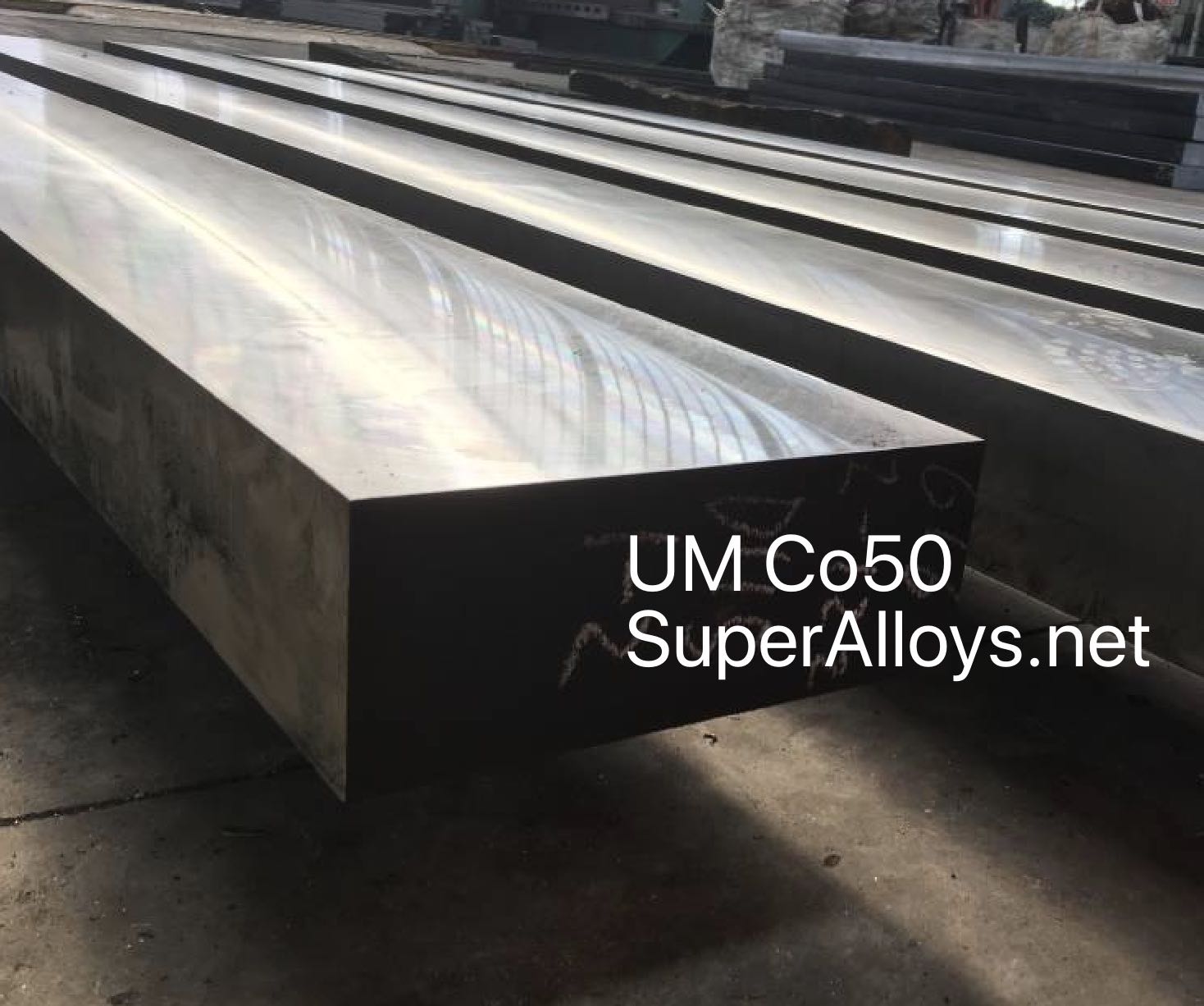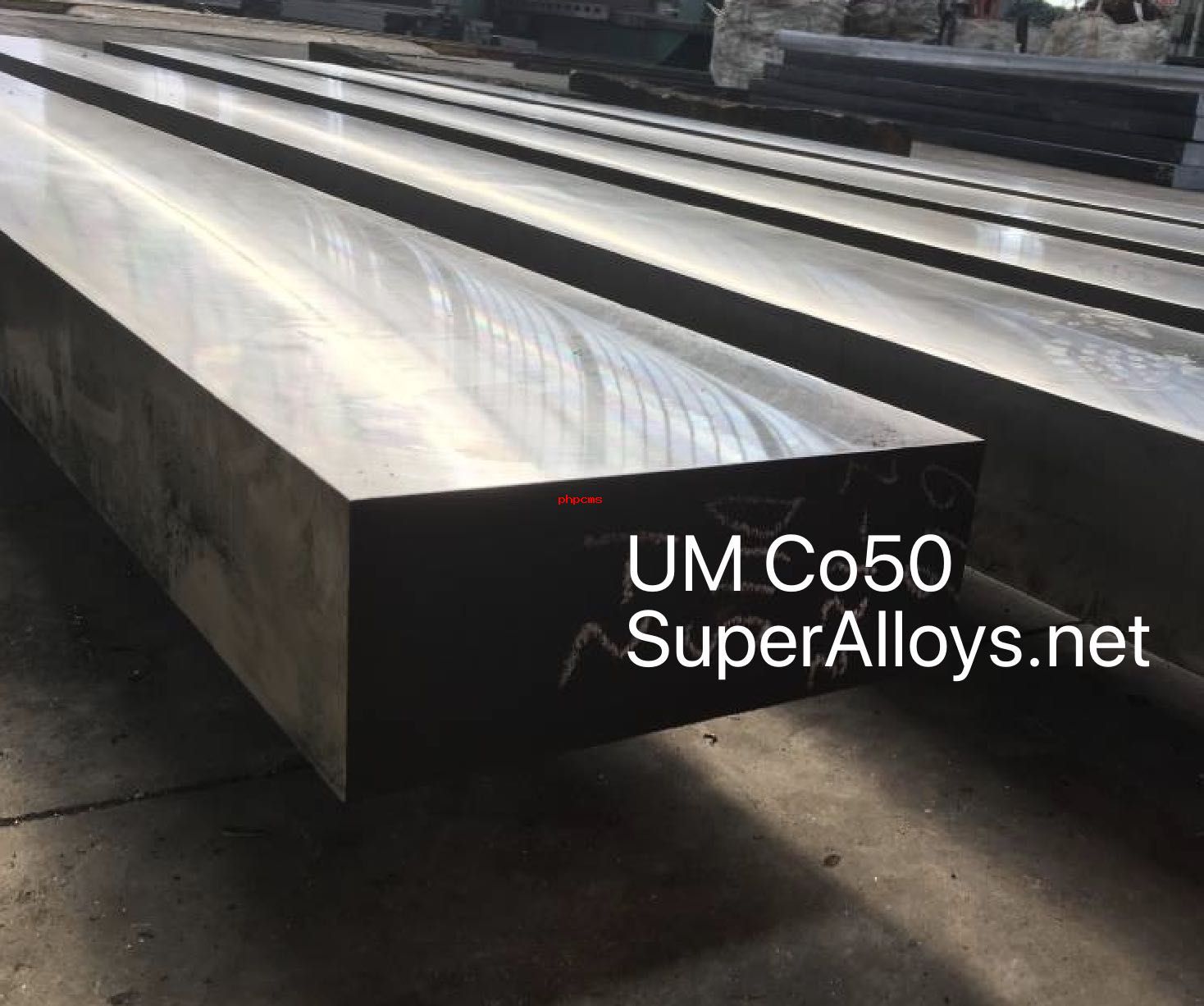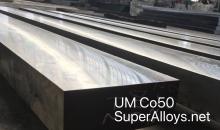
| Si | 0.75 |
| Mn | 0.65 |
| Fe | 20.5 |
| Cr | 28 |
| Co | 50 |
| C | 0.08 |
Main Features
UMCo50 is a heat-resistant cobalt alloy that has excellent thermal shock resistance and wear resistance. It also shows great strength against sulfur-and vanadium-attacks. Another feature is its higher melting point compared to other cobalt base or nickel base heat-resistant alloys. For example, the alloy used for skid rails at a steel mill undergoes regular use at 1,350°C. Thus UMCo50 shows successful results in the application related to heat treatments and furnaces where other alloys could not be used due to their low melting point.
Shock Resistances
Since thermal shock resistance was given first priority when developing UMCo-50, this alloy shows far more outstanding thermal shock resistance than the popularly used 25Cr-20Ni stainless steel. For example, even after repeating the heating and cooling cycle (1000-water cooling-7 seconds) for 500 times, no cracking occurred. As a practical example, the alloy was used for four and a half years as a tray which was heated up to 1000 in a heavy oil furnace to quench various quenching agents. Hardly any cracking occurred in UMCo-50, whereas the 25Cr-12Ni alloys were able to be used for only 8 months in average.
Wear Resistances
As for the wear resistance of UMCo-50, hardly any deterioration was found after being used as a sintering bar for copper sulfide for 50 months. On the other hand, cast iron parts used till then were heavily corroded, oxidized and worn even though operations were conducted at 900, making them usable for only three and a half months.
Weldability
UMCo-50 can be welded together by arc or oxy-acetylene methods. When higher wear resistance is required, weld additionally with BISHILITE (HARDFACING ALLOYS). When welding UMCo-50 to stainless steel or steel, MA-W welding rod can be used.
Available Product Forms
Various shapes, such as flat-rolled plates, forgings, welding wires, wires, welded pipes and tubes, seamless pipes and tubes can be manufactured.
Technical Data
Physical properties, Mechanical properties, High temperature hardness, Example of stress-breaking strength, High temperature corrosion data are as shown below.
Physical Properties
| Specific gravity | Melting temperature | Electrical Resistivity (25°C) |
Thermal expansion (0∼1000°C) |
Specific thermal conductivity (22°C) |
|---|---|---|---|---|
| 8.05 | 1380∼1395°C | 82.5Ω•cm | 16.8 X 10-6 /°C | 0.022cal/cm/sec./°C |
Mechanical Properties
| Tensile strength kgf/mm2 | Yield strength(0.2%)kgf/mm2 | Elongation% | |
|---|---|---|---|
| 3mm Sheet (Flat rolled) | 90∼118 | 37∼46 | 10∼28 |
| 3mm Sheet : 1100°C X 30'Annealed | 80∼90 | 30∼37 | 10∼20 |
High temperature hardness (Forgings)
| Temperature (°C) | Forgings (HV) |
|---|---|
| 20 | 260 |
| 600 | 228 |
| 700 | 210 |
| 800 | 160 |
| 860 | 76 |
| After work hardening | 425 |
An example of stress-breaking strength
| Temperature(°C) | Stress kgf/mm2 | Breaking time (hr) | Elongation % |
|---|---|---|---|
| 700 | 18 | 21.3 | 15.6 |
| 900 | 4 | 118.6 | 12.6 |
High temperature corrosion
| Temperature(°C) | Time | Reduced weight | ||
|---|---|---|---|---|
| g/m2 | g/m2/hr | |||
| Plate (Flat rolled) | 1000 | 144hr | 26∼83 | 0.18∼0.58 |
| Plate (Flat rolled) | 1200 | 144hr | 200∼120 | 0.69∼0.83 |
The results for 27Cr stainless at 1200°Cin 96hours are 300g/m2, 3.1g/m2/hr.



